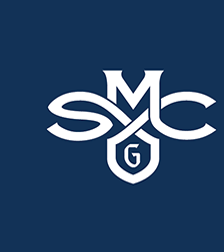Replica-extraction-transfer’ nanostructure-initiator mass spectrometry imaging of acoustically printed bacteria
SMC Affiliated Work
1
Status
Faculty
School
School of Science
Department
Biology
Document Type
Article
Publication Date
10-10-2013
Publication / Conference / Sponsorship
Analytical Chemistry
Description/Abstract
Traditionally, microbes are studied under controlled laboratory conditions as isolates in planktonic culture. However, this is a vast extrapolation from their natural state; development of new techniques is required to decipher the largely unknown world of microbial chemical interactions in more realistic environments. The field of mass spectrometry imaging has made significant progress in localizing metabolites in and around bacterial colonies, primarily by using MALDI and ESI-based techniques that interrogate the top surface of the sample. Unfortunately, surface-based laser-desorption techniques, such as nanostructure-initiator mass spectrometry (NIMS), which has advantages in detection of small metabolite compounds and low background, has not been suitable for direct microbe imaging because desorption/ionization occurs on the bottom of the sample. Here, we describe a “replica-extraction-transfer” (REX) technique that overcomes this barrier by transferring biomolecules from agar cultures of spatially arrayed bacterial colonies onto NIMS surfaces; further, we demonstrate that acoustic printing of bacteria can be used to create complex colony geometries to probe microbial interactions with NIMS imaging. REX uses a solvent-laden semisolid (e.g., gel) to first extract metabolites from a microbial sample, such as a biofilm or agar culture; the metabolites are then replica “stamped” onto the NIMS surface. Using analytical standards we show that REX–NIMS effectively transfers and detects a range of small molecule compounds including amino acids and polyamines. This approach is then used to analyze the metabolite composition of streaked Shewanella oneidensis MR1 and Pseudomonas stutzeri RCH2 colonies and further resolve complex patterns produced by acoustic printing of liquid microbial cultures. Applying multivariate statistical analysis of the NIMS imaging data identified ions that were localized to different regions between and within colonies, as well as to the agar gel. Subsequent high-resolution tandem mass spectrometry was used to characterize two species-specific lipids that correlated with the spatial location of each microbial species and were found to be highly abundant in cell extracts. Overall, the use of acoustic printing of bacteria with REX–NIMS imaging will extend the range of analytical capabilities available for characterization of microbial interactions with mass spectrometry.
Scholarly
yes
DOI
10.1021/ac402240q
Volume
85
Issue
22
First Page
10856
Last Page
10862
Disciplines
Biology
Original Citation
James Berleman (Biology): “‘Replica-extraction-transfer’ nanostructure-initiator mass spectrometry imaging of acoustically printed bacteria,” with Louie KB, Bowen BP, Cheng X, Berleman JE, Chakraborty R, Deutschbauer A, Arkin A, and Northen TR, in Analytical Chemistry, Oct 10, 2013. 85 (22), pp 10856–10862. doi:10.1021/ac402240q.
Repository Citation
Louie, Katherine B.; Bowen, Benjamin P.; Cheng, Xiaoliang; Berleman, James E.; Chakraborty, Romy; Deutschbauer, Adam; Arkin, Adam; and Northen, Trent R.. Replica-extraction-transfer’ nanostructure-initiator mass spectrometry imaging of acoustically printed bacteria (2013). Analytical Chemistry. 85 (22), 10856-10862. 10.1021/ac402240q [article]. https://digitalcommons.stmarys-ca.edu/school-science-faculty-works/65


